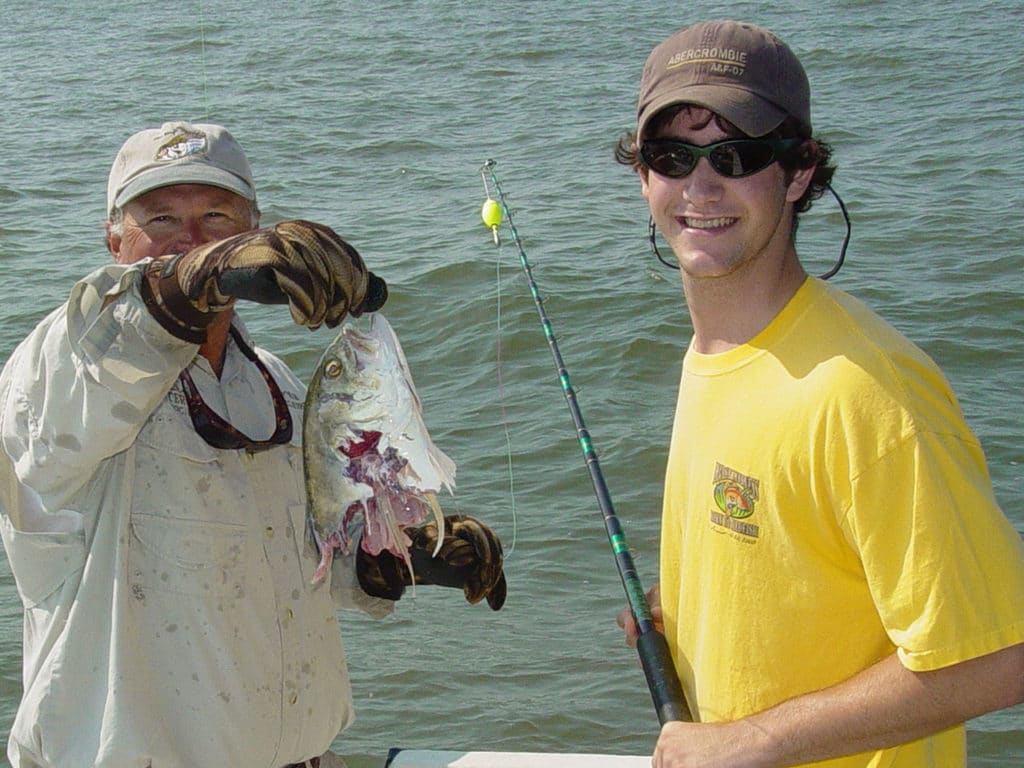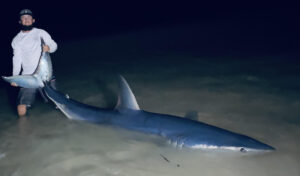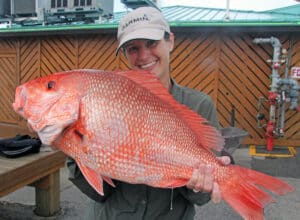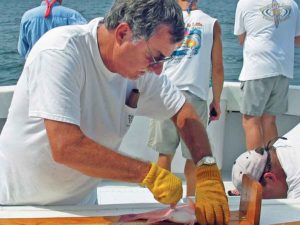
Three fishermen 25 miles off Empire, La. last Oct. 28 had their 24-foot center-console fishing boat sink in mid-morning with no way to summon help. They spent the night clinging to life jackets and boat debris until help arrived the next day.
A Coast Guard helicopter located the men Oct. 9 and a rescue boat arrived on scene and witnessed two of the boaters fending off sharks, along with shark bite injuries to both boater’s hands.
“The two fishermen were pulled from the water by the boat crew before additional injuries could occur,” officials said. The third boater was “hoisted” from the water by helicopter.
Two of the three anglers had shark bites to their hands. One angler’s life jacket was torn during the shark attack.
This harrowing incident exemplifies the trouble with sharks that fishermen are facing throughout the Gulf of Mexico and along the South Atlantic coast of the U.S.
Charter captain Josh Swinford deals with overabundant sharks every time he runs offshore. He and friends were in his 36-foot Yellowfin boat “Strike Zone” out of St. Martin, Miss. late this summer chasing bottomfish.
Sharks stealing their catches had been horrible for months. They were so bad that Swinford and buddies rarely worked around fish-filled oil rig platform legs. When they did, they only would catch a fish or two, then they’d move location to avoid losing other fish to sharks attracted to their boat.
Hammerheads, reef sharks, tigers, blacktips, sandbar sharks, bulls, and other species were part of a wide assortment of apex predators feasting on their catches. This forced the anglers to stay on the move to avoid drawing sharks up from the depths and taking their catches as they were fought on hook and line.
“Sharks are all sizes, from 3 to 4 feet to 6 to 8 feet,” says Swinford. “But there are big ones, too, like the shark that came up and ate a big gag grouper we fought to the boat, and swallowed it whole – tail first.”
The anglers hauled just the head of the grouper into the “Strike Zone” boat, which weighed 16 pounds. The gag whole was believed to weigh 40 pounds or more. – eaten in a single bite by the shark.
“That shark was longer than my boat is wide, which we clearly saw when it swam under my boat after engulfing the grouper,” he says.
The trouble with sharks isn’t just an offshore phenomenon. Near-shore fishermen have hassles with the toothy predators, too. Almost anywhere tarpon mass in number draws sharks, massive ones, especially hammerheads and bulls that eat 100-pound tarpon like hot dogs, with 1,000-pound sharks seen often.
Coastal fishermen after oversize black drum and redfish frequently lose catches to sharks, and report seeing immense sharks cruising in river mouths and bays where spawning drum gravitate.
Well-known guide Mike Frenette who owns the Redfish Lodge of Louisiana recently had an angler catch a big near-shore redfish with a half-circle ring cut in its belly. The bite was from a shark that hit the fish as it was being fought to the boat. They landed the red, but the carnage from the shark attack is an all-too common sight to many anglers in many areas.
Sport and commercial fishermen have been complaining to state and federal agencies for years about the growing trouble with sharks, and finally someone may be listening.
“We hear public comment, and it almost always includes shark depredation [attacks] where you’re out there with a charter trip, pulling up snapper, and the sharks are getting to them,” says Chris Schieble, director of marine fisheries for the Louisiana Department of Wildlife and Fisheries, who is also on the federal Gulf fisheries management council.
Schieble says Louisiana has plans for opening shark fishing year-round. He also reports the feds are assessing possible new increased Gulf of Mexico catch quotas for sharks, especially blacktips and bull sharks.








